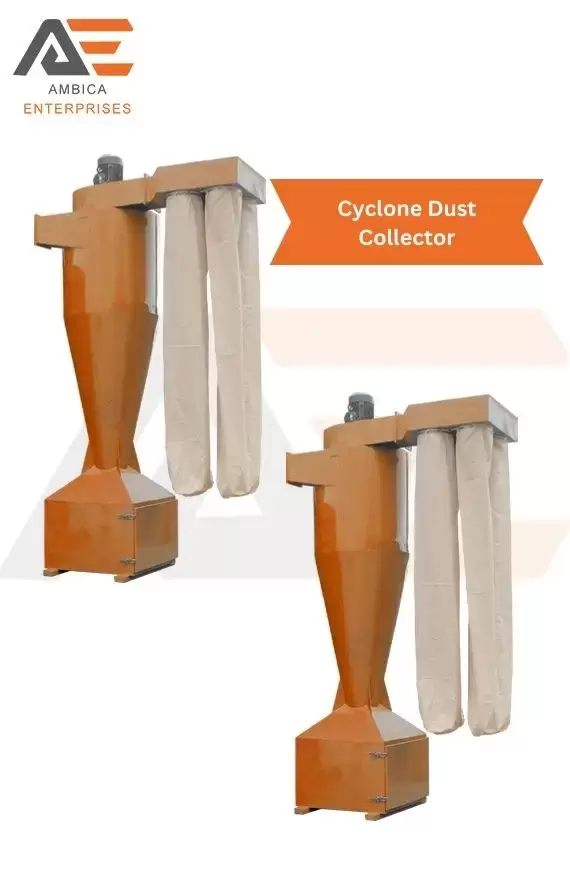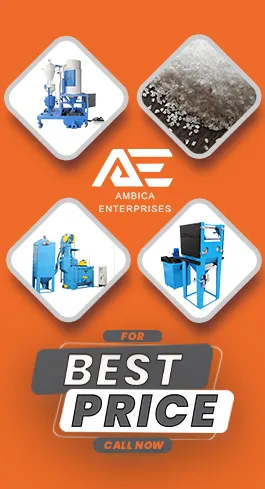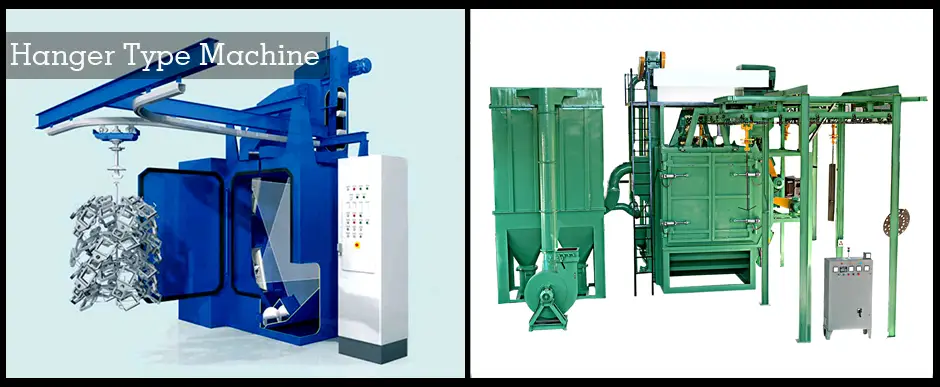
Cyclone Dust Collector
Price Range : ₹ 80K - 2Lakh
Air Transport
Sea Transport
Land Transport
- A cost-effective solution to a variety of dust collection issues; excellent for high temperature, high dust load, and product recovery applications.
- Can be used as a pre-cleaner, alone, or with an optional bag filter assembly.
- Applications from 510 to 22,082 m3 per hour (300 to 13,000 cfm).
- Heavy-duty design for durability and minimum upkeep.
- Meets the majority of seismic and Exp C wind load standards of 90 mph (145 kmph).
- Cone part that is easily replaceable and detachable.
5 Star Rating by our Precious Clients
- More Details
- Call Now
- Get Latest Price
![]()
Leading Supplier & Exporter
![]()
Trustseal Verified
![]()
ISO Certified
![]()
Manufacturer
Cyclone separators are another name for cyclone dust collector. They are mainly employed to remove particles with higher densities. The bottom-positioned collection bin is where the dust is collected and directed using the cyclone dust collection system utilization of centrifugal force. In accordance with the flow requirements, the dust density, the projected dust volume, the type of dust, etc., we can also produce specialized cyclone dust collector systems.
Cyclone Separators
Industrial Cyclone separators offer a low-cost, low-maintenance way of eliminating particulate matter from air streams. A cyclone typically comprises of a lower conical element known as the cone and an upper cylindrical part known as the barrel. An outer vortex is created when the air stream enters tangentially at the top of the barrel and flows downward into the cone. The outer vortex's growing air velocity exerts a centrifugal force on the particles, displacing them from the air stream. While the particulates fall into the dust collection chamber that is connected to the bottom of the cyclone, an inner vortex is generated when the air hits the bottom of the cone, reversing direction, and leaving out the top as clean air. Cyclone dust collector used for sand blasting machine, abrasive shot blasting machine process & woodworking etc.
A different multi cyclone dust collector design prevented the gathered particles from hitting the Walls, protecting them from abrasion. This was accomplished by creating a secondary air flow within the cyclone. The incoming airflow carrying the information enters the cyclone from the bottom and is propelled into a spiral spin by fixed Spinner vanes. The secondary air flow enters the cyclone from the top and descends to the bottom, where it picks up the primary air's particulate matter. Because the secondary air flow propels the particles into the collection area and does not just rely on gravity to do so, it also permits the collector to be mounted optionally horizontally.
Working of Dust Collector Cyclone Separator
Air containing dust is directed away from the cyclone filter dust collector unit by a helical baffle when it arrives through the air inlet. The heavier dust particles are carried to the inside sidewalls and the base of the device by centrifugal force. Through the inner cylinder, cleaned air is transported and released, either to the atmosphere or optionally after filters.
Sawdust is recovered from the air in sawmills using large-scale cyclones. Cyclone Dust Extractor is also utilized in cement manufacturing as part of kiln pre-heaters and in oil refineries to separate gases and oils. In commercial and industrial kitchen ventilation, cyclones are also utilized to separate grease from exhaust air in extraction hoods. Mini Cyclone dust collector is being utilized more frequently in households as the primary bag-less technology. The fluid dynamics and flow structures of a cyclone separator are quite complex despite the device's straightforward operation. This apparatus is a vertical cylinder-shaped setting chamber set up so that the air-carrying particles spiral around it to the exterior wall. Because there are no moving elements that can wear out or break, and because they primarily comprise a drum with funnels on the bottom and an input and an outlet, cyclones are quite common.
Chemical processes have stages where reactions take place and/or where streams of the process are separated and purified. These divisions rely on physical principles that are based on variations in the characteristics of the stream's elements. Two or more phases with various compositions make up heterogeneous mixes. These mixtures are made up of elements that do not interact chemically and have boundaries separating the various phases that are readily apparent. One or more suitable approaches can be used to separate the components of such a mixture. The procedures used for separation include Gas-Liquid (vapor-liquid), Gas-Solid (vapor-solid), Liquid-Liquid (immiscible), Liquid-Solid, and Solid-Solid separation, among others. Utilizing the variations in density between the phases will enable this separation. Centrifugal or gravitational forces may be applied to strengthen the separation. The separation units may be vertical or horizontal. The primary methods for dividing the phases and the elements that make up the phases are covered in detail. The following categories could be used to group the main separating techniques for such mixtures:
Dust Collector Cyclone Separator Types
- Cyclone Separator Dust Collector
- Gas-Liquid separator Dust Collector
- Liquid-Liquid Separator Dust Collector
- Gravity separator Dust Collector
- Centrifugal separator
- High-speed tubular centrifuge
- Scrubbers Dust Collector
- Electrostatic precipitator Dust Collector
- Hydro Cyclone Dust Collector
- Wood Working Dust Collector
Cyclone dust collector uses
Centrifugal force is used by a mechanical hydro cyclone separator to remove enormous amounts of dust from industrial applications. Various industrial applications, including as pulp and paper industries, use cyclone separators.
- Cement factories.
- Steel factories.
- Coal-fired power stations.
- Metallurgical facilities
- A sawmill.
The ratio of particles collected to particles entering the cyclone dust collectors is known as fractional efficiency.
This graph shows the effectiveness of a Cyclone collector under clean, partially loaded, and completely loaded filter bag circumstances with and without an optional filter bag assembly.
Cyclone Dust Collector Manufacturers in India
We are The Leading Best Cyclone Dust Collector Manufacturers in India and Suppliers of Cyclone separators, hydro cyclone separator, cyclone dust collector, jet cyclone dust collector, cyclone dust extractors, wood working dust collector, wood cyclone dust collector, Industrial cyclone dust collectors, cyclone dust collection systems in India. Ambica Enterprises also offer Sand Blasting Machine, Shot Blasting Machine, Sand Blasting Cabinet, shot blasting room, tumblast shot blasting machine, Automatic sand blasting machine, sand blasting nozzle, sand blasting helmet, portable grit blasting machine, abrasive blasting machine, abrasive cabinet with dust collector, thermal Spray gun, arc spray gun, flame spray gun, hvof gun, thermal spray wire, zinc wire, metalizing wire, Babbitt wire, and abrasive media.
Frequently Asked Questions (FAQ's)

